
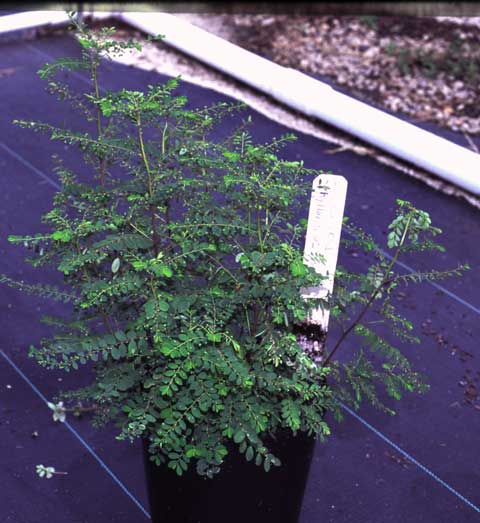
Habit [Top]
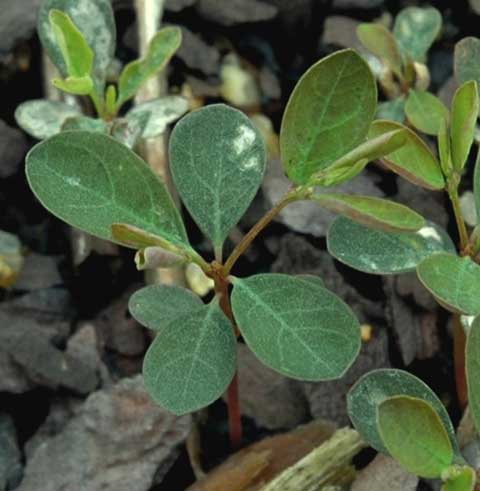
Seedling [Top]
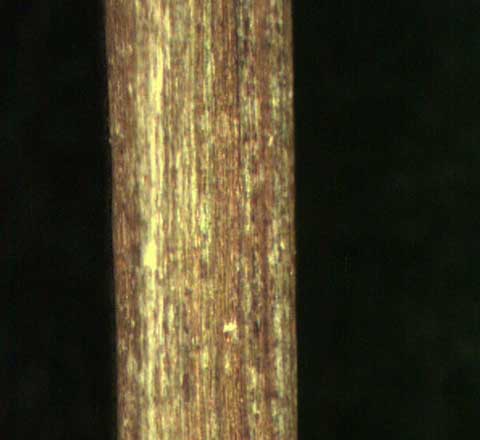
Stem [Top]
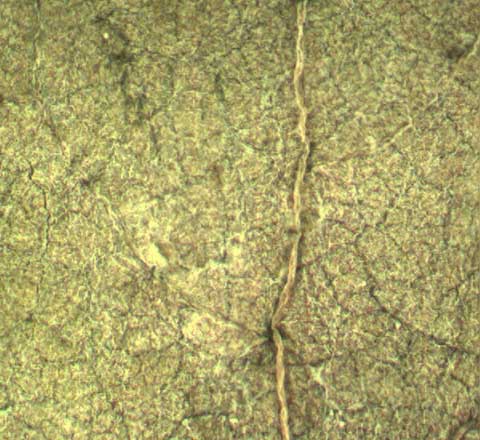
Abaxial leaf surface [Top]

Inflorescence [Top]
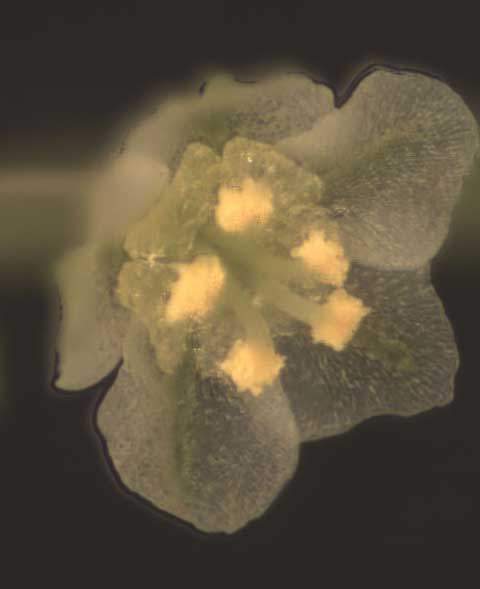
Flower [Top]
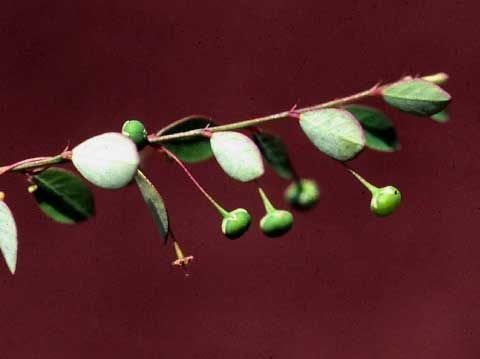
Infructescence [Top]

Fruit [Top]
P-F
G
P
G
P
P-F
G
f-G
G
F
P-F
P-F
P
Longstalked phyllanthus (Euphorbiaceae) is an erect summer annual, although it may occur as a perennial in subtropical environments. Longstalked phyllanthus typically produces a single, erect stem 2 to 3 feet in height, with little branching other than fruiting branches. Leaves are similar to chamberbitter, oblong in shape, � to � inch in length, on short branches, and look similar to compound leaves of some legumes. Plant parts do not exude milky sap when broken. Flowers are greenish-white. Round fruit are produced on the undersides of the lateral branches in the axils of the leaves on � to � inch long stalks. Seedlings emerge in summer through early autumn but may persist year round in sub-tropical climates. Plants may flower summer through early fall when only a few inches tall, then die after frost. Seeds are forcefully expelled short distances from the fruit when ripe. Longstalked phyllanthus is not well controlled by most preemergence herbicides labeled for use in nursery crops. Emerged plants should be hand weeded when young to prevent seed production and spread. Herbicide efficacy rankings for this species are based on limited experimental data. [TOP]